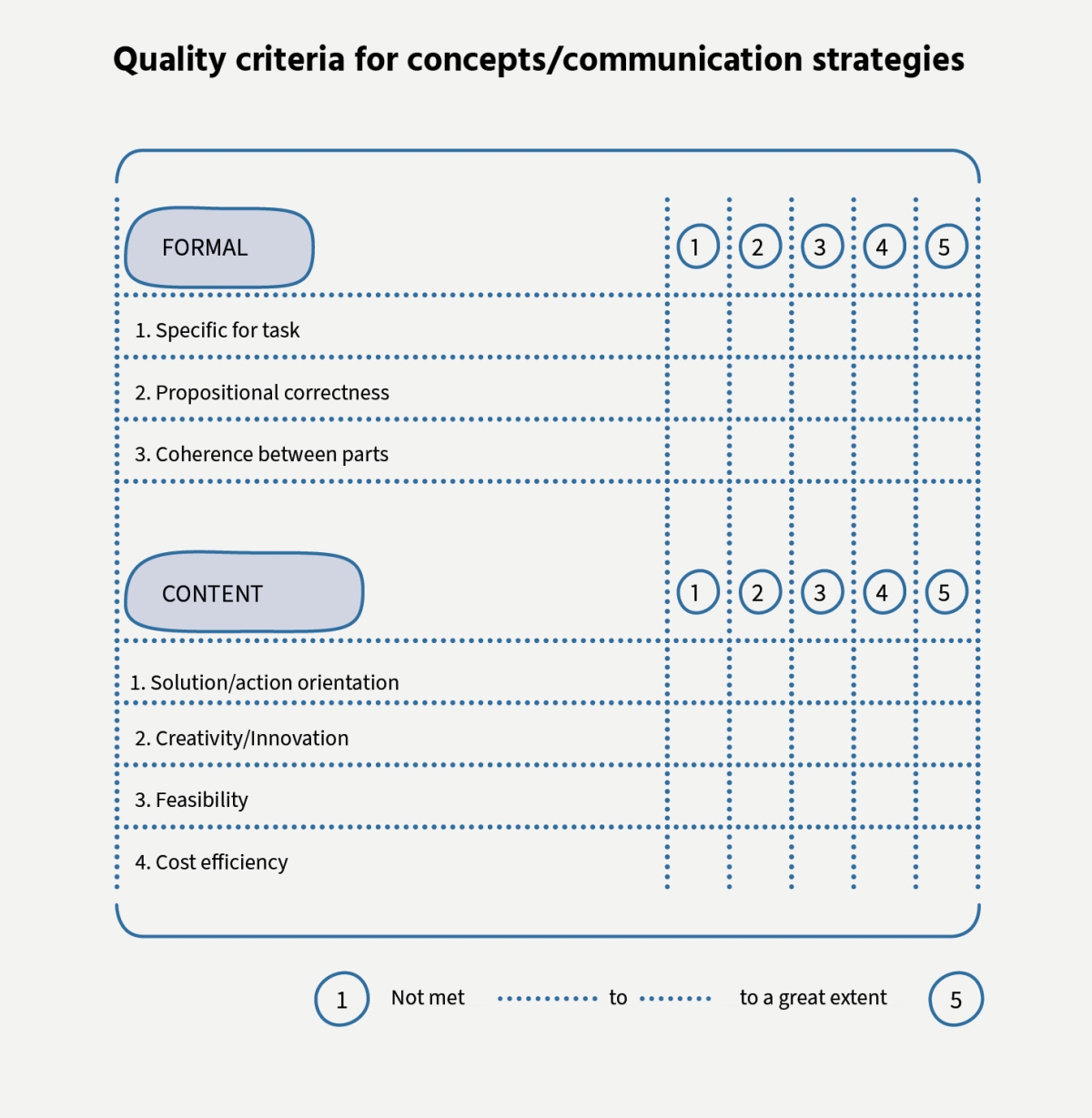Content, process and quality criteria

Strategy development is one of the most valuable and complex services provided by communication managers in companies, organizations and agencies. At the same time, the demands on the strategy and management of communication have increased in recent years. The reasons lie in the increasingly complex environment with ever more confusing stakeholder constellations, in the diversity of issues, in the fragmented media landscape and in new media usage behavior. In addition, the portfolio of available measures has been constantly expanded by social media and other digital applications, such as augmented, mixed and virtual reality or the Internet of Things. Last but not least, the strategic contribution of communication to corporate / organizational success has now gained recognition in management theory as well as in corporate management.
However, this also increases the demands on communication. If you want to make a difference in companies and other organizations and receive a budget for it, you have to make a decision proposal. This should be done explicitly and in writing. When it comes to communication strategy, these decision proposals traditionally carry the label "communication concept."
The subject (scope) of these concepts can be corporate communication, internal communication, financial communication or marketing communication, and of course integrated communication (campaigns), which combines several of these communication fields in a temporal and media dramaturgy. There are also strategies for topic areas (e.g., change communication, innovation communication), groups of measures (e.g., advertising concept, digital strategy) and concepts for projects. Furthermore, communication strategies differ according to the period for which they plan (e.g., annual concept).
Communication strategies follow the process of project management
Like all strategies, communication concepts are basically structured according to the four-stage process of project management: Analysis, Strategy, Measures and Controlling.
Cutlip/Center/Broom's (2006) four-step model of the Public Relations process provides an overview of the tasks and guiding questions in the stages for developing communication strategies.
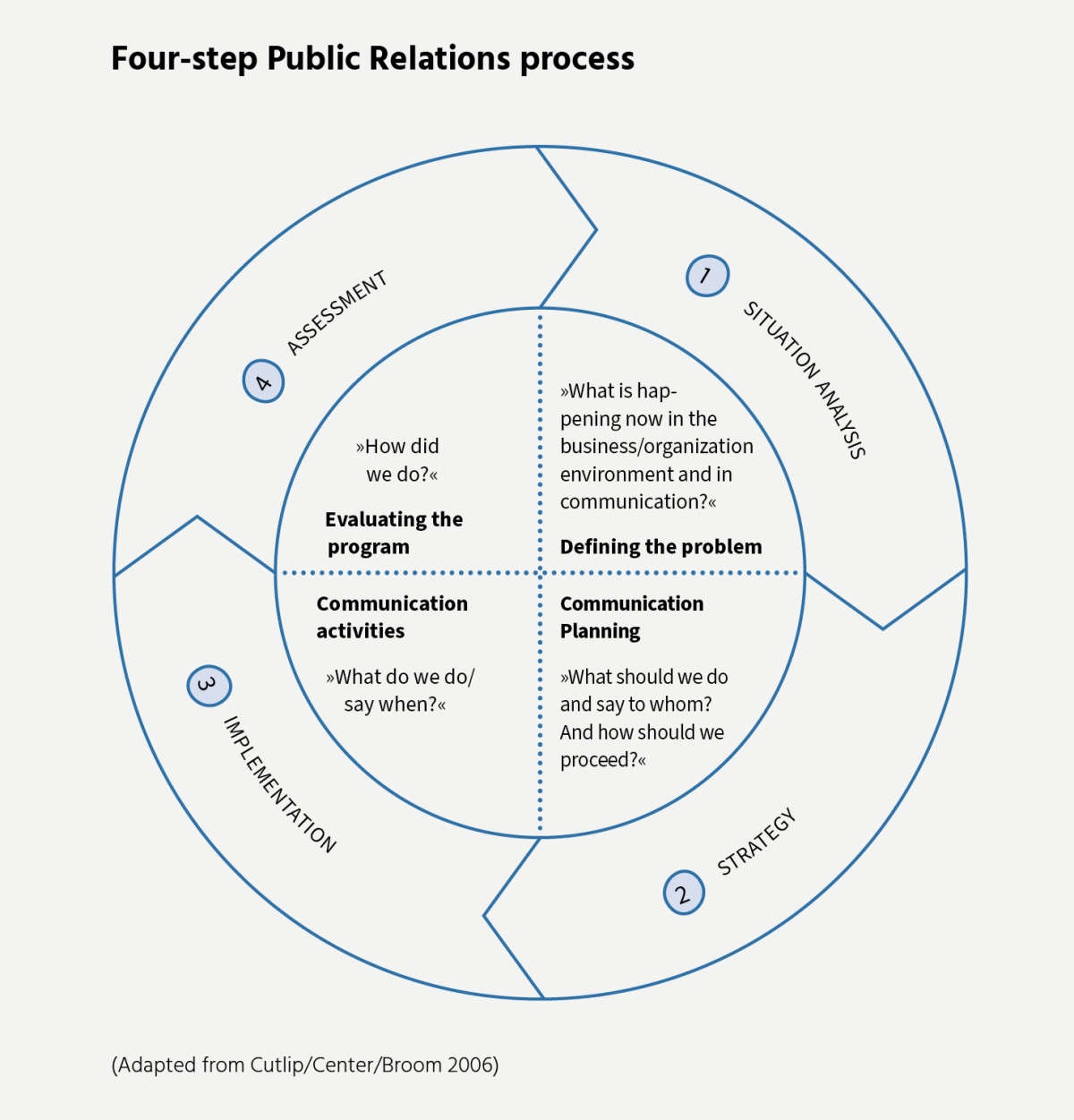
In its Guide to Research, Analysis and Evaluation (2021) the Institute for Public Relations (IPR) defines the strategy process with a focus on measurement, with five components: Landscape analysis, Setting objectives, Tactical Creation and activation, and Evaluation and continuous improvement. The main difference to the four step-model of project management lies in step II: Setting objectives which in this model is not part of the Strategy but a step of its own.
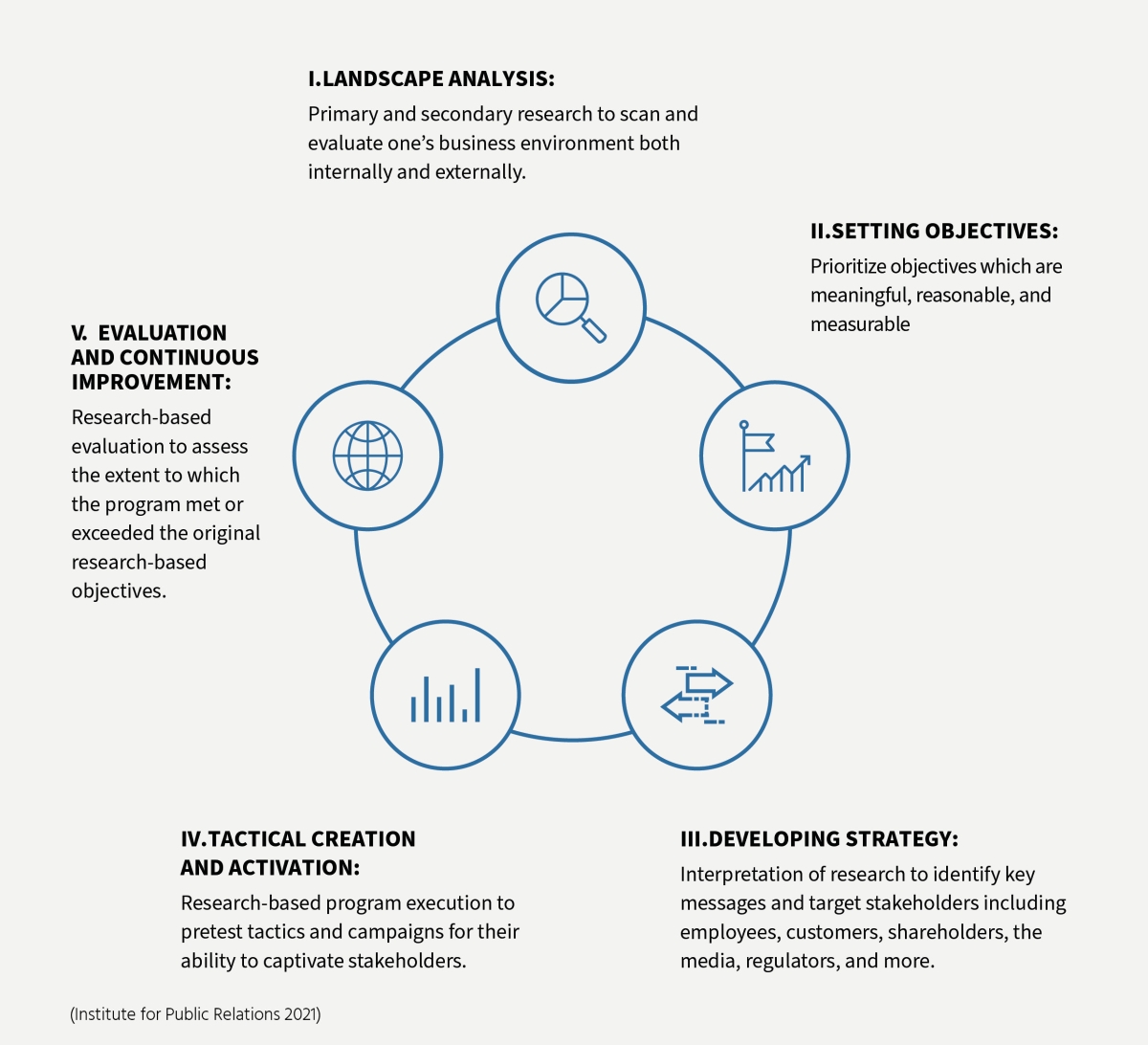
Pelz's (2004) model aims to develop online campaigns. It also follows the four-step Analysis - Strategy - Measures - Controlling, here supplemented by the first part Task. In line with the scope of the online campaign, the process steps for strategy development in the age of integrated and digital communication include content such as Customer/stakeholder analysis and benchmarking, Creative guiding idea, Content: Messages/storyline, Channel strategy, Media usage in the customer journey, Meshing, Design, User experience, Governance and Effectiveness of the media mix. The model uses familiar tools from management and marketing in the process steps. Under Task and Objectives it establishes the link between operational and communication objectives. However, in a departure from the typical sequence in project management, the objectives are dealt with together with the task – and thus before the analysis of the situation. But objectives can only be cleanly defined on the basis of the actual state.
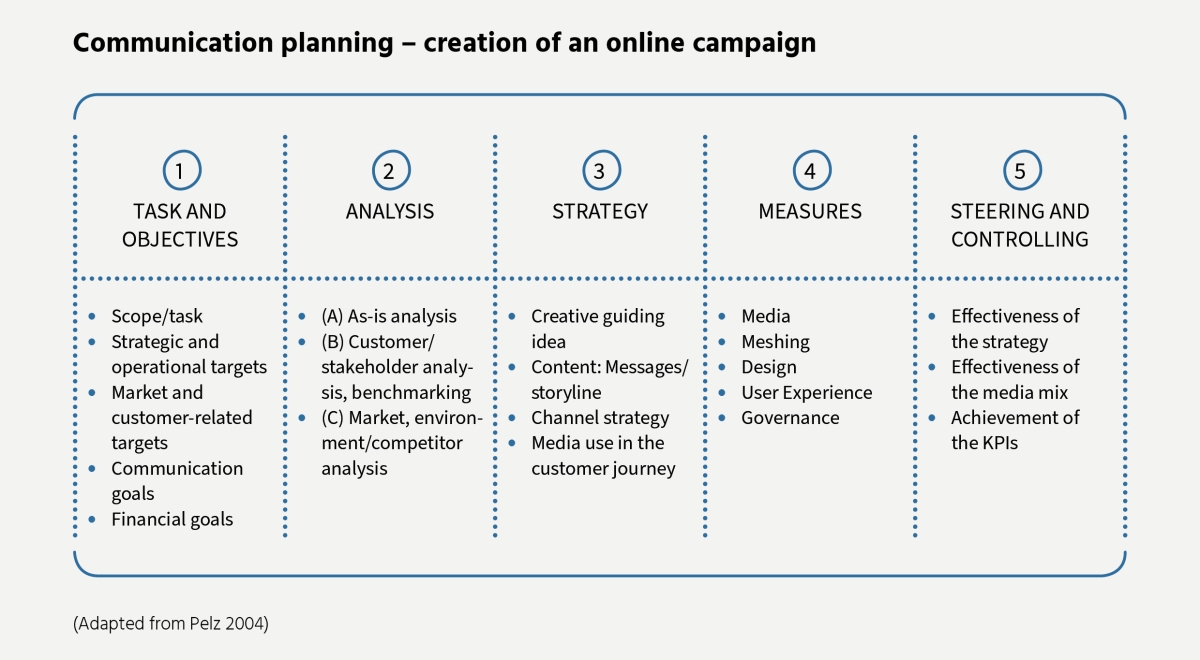
Strategy process: Sequence of management tools
For many journalists and practitioners who still populate the communications and marketing departments of companies and organizations and not least agencies, strategy development continues to present itself as a craft to be authenticated by the experience of the consultant/team.
But today, communication strategies in corporate communications and marketing are subject to requirements similar to those in general management or to the strategies of other areas and central functions. Since the 1980s, consulting firms and academics, especially at business schools, have been developing models and corresponding tools to solve tasks in the management of companies in a standardized and thus efficient, effective, and transparent manner.
Accordingly, management processes and tools must be incorporated into the development of communication strategies. Nowadays, strategy developments must be carried out as a management process with transparent tools – as has long been the case in management consultancies and in corporate management. Only if the strategy development process is configured as a sequence of successive working tools do comprehensible and convincing decision templates emerge in which the strategy of communication is docked onto the strategy of the company/organization.
The toolbox contains 111 tools for developing communication strategies and describes their application. For the English toolbox the controlling part has been revised, especially as far as web and social media are concerned.
The strategy process is designed as a sequence of tools. The selection and the sequencing of the tools is a preliminary project to the strategy creation, and varies the typical five steps of project management: Identify the problem, Set the target, Define framework of the project, Define deliverables and Prioritize selection criteria.
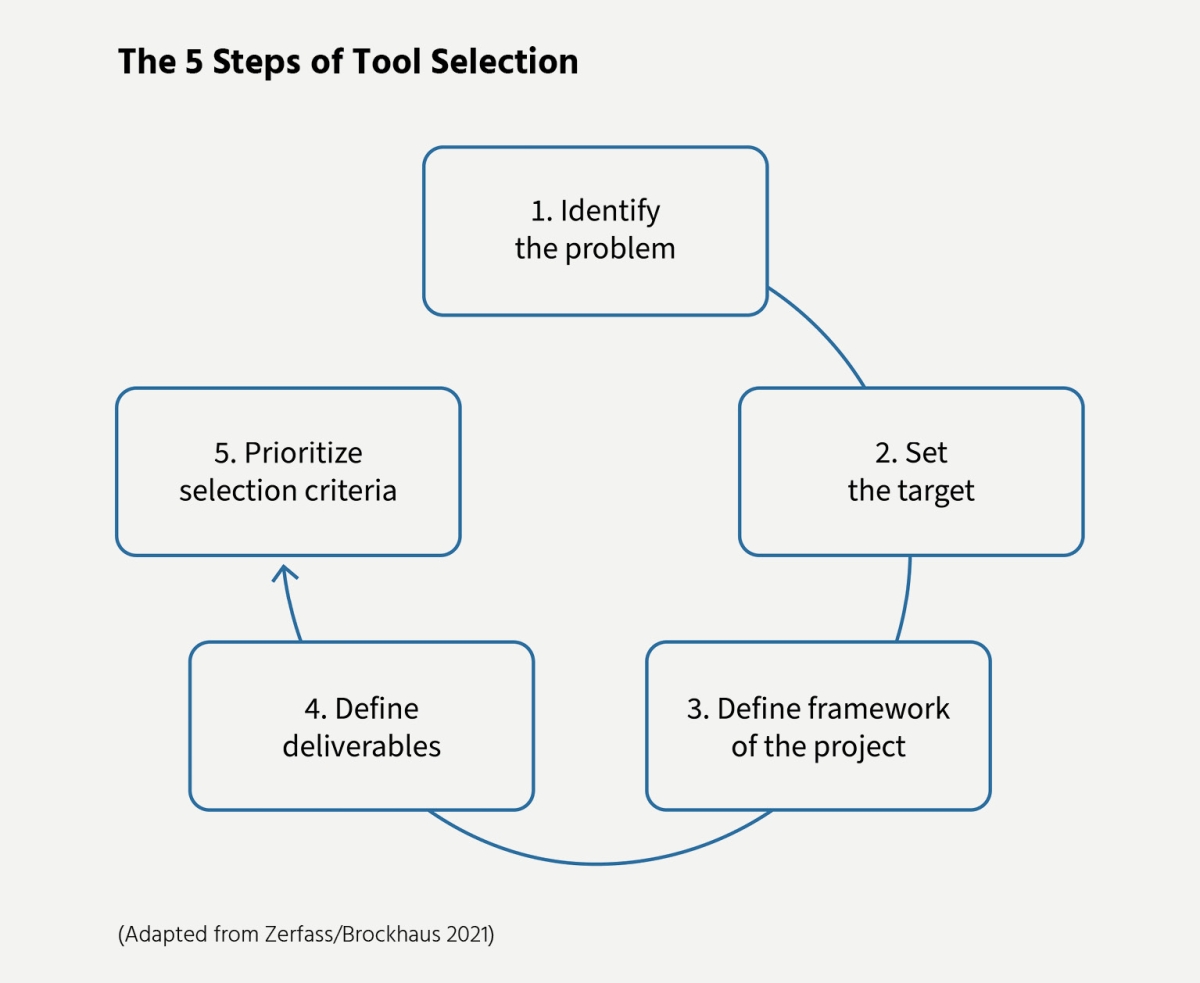
The tools are assigned to the typical phases of the strategy development process – task, analysis, strategic planning, measures and controlling. The tools are ready to use, the theoretical background and models are explained, sample entries in the tools facilitate the work with them. 16 creative tools are provided for generating ideas in the context of strategy development.
The tools are field-tested and make it easy to get started with communications strategy development. They can be used both in individual work and in the facilitation of workshops with teams.
Quality criteria for strategy process and decision template
While there are numerous process models for strategy development and – implicitly – structural proposals for the decision template, no explicit criteria for the evaluation of process steps and/or results can be found. This leaves it unclear what distinguishes a good communication strategy from a bad one.
The lists of criteria for awards can provide initial. In the following, we make a proposal for quality criteria for communication strategies, consisting of three formal and four content criteria.
Formal criteria
Specific to the task. The situation description, the objectives and the strategy as well as the measures and their evaluation (controlling) are solutions for the requirements set in the task. This must be examined for each individual statement and proposal. What sounds trivial is not the practice in many strategy developments and communication concepts. Very often, the experts and executives involved follow their own agendas and preferences instead of asking themselves, over and over again: Does this analysis, does this proposal actually pay into solving the problem? Are there possibly models and proposals that do this better?
Propositional correctness. The statements in the parts of the decision document are correctly assigned to these parts; the parts of the conception contain only statements according to the heading – this can be recognized by the language patterns of the statements. That is, the Task part contains only sentences and graphics related to the task, and the Analysis part contains only statements about the situation etc. The Task section typically contains the scope of the activity, the operational objectives broken down into initial communication goals, and statements about the nature of the document. The Analysis of the situation contains statements about actual states; there is no anticipation of objectives or strategic levers. Statements in situation analysis are typically written in the present indicative, and the sentences of state descriptions typically feature weak verbs. Objectives are states in the future – accordingly, the verbs here are also weak, the tense can be present or future tense. Messages are to be texted as desired content as they are to be ingrained in the minds of stakeholders. Statements in the Strategy combine an objective with one or more strategic levers (sets of measures), typically in the structure final clause, statement ("To achieve X, we do Y"). The core of Measures is the description of activities – this is typically recognizable by action-strong verbs. Typical test questions reveal the errors in this area: Are the statements correctly assigned to the parts of the strategy/concept? Are there unnecessary repetitions (redundancies)? Are there any ambiguities in the proposed decision that might confuse the decision maker/reader of the submission?
Coherence between the parts. This must be reviewed again and again in the strategy process. Above all, however, the decision template must be checked for possible inconsistencies in the quality review. The corresponding statements must either be deleted, or the appropriate additions must be made in the other parts. The guiding questions in the testing process are: Is there at least one target for each statement in the situation analysis? At least one strategic lever for each goal? For each strategic lever, at least one measure that realizes it? And conversely, does each action implement a strategic lever, responding to an objective that in turn results from a previously presented situation?
Content criteria
Solution/Action Orientation. The objectives, the strategy and especially the measures are aimed at solving the specific communication task. General problem deepening and principled statements about the world ("reasoning") are not purposeful – this includes ethical principles. The guiding questions here are: Are the suggestions specific to the task? Do the suggestions describe an action by those responsible for communication?
Creativity/Innovation. While creativity refers to the messages, the design and the actions, innovation rather targets the strategic levers and the technical realization. The benchmark for evaluating creative performance and innovative strength are the results of best-practice research and benchmarking. Accordingly, the guiding questions are: Are the proposals in the decision document creative and/or innovative enough to outperform the relevant benchmark?
Feasibility. The feasibility is ideally assessed by experts in the field. Feasibility folds up into dimensions like: Are the necessary resources available in the organization? Do the employees with the necessary skills have enough time? Are the proposals technically feasible – e.g., in the existing digital system environment?
Cost Efficiency. The strategic levers and the main packages of measures are assessed in terms of which of them achieve the optimal balance of costs and benefits. The benefit is the achievement of the objectives; the yardstick is the key performance indicators (KPIs) defined for this purpose. The result of the cost-benefit analysis allows the optimized allocation of available resources to the strategic programs and individual measures. The guiding question here is: Which of the proposed measures have the best/next best cost-benefit ratio (resources used vs. benefits achieved)?
